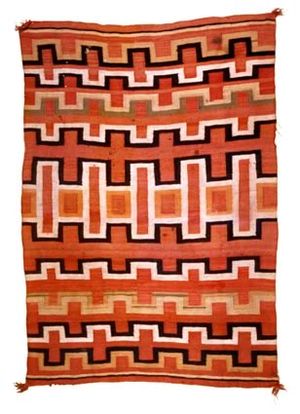Weaving

Weaving is a craft in which two different pieces of yarn or string or interlaced to make fabric. The threads that run leangth wise are held under tension are called warp. The threads that run from side to side and aren't held under tension are called weft. Weaving is done on a loom, the main job of which is to hold the warp under tension and insert weft yarn in it.
Course Outline
[edit | edit source]1.Weaving Preparatory Process
2.Chronological Development of looms
3.Objectives & Classification of Shedding
4.Tappet Shedding
5.Dobby Shedding
6.Jacquard Shedding
7.Picking
8.Beating
9.Take up & Take off mechanism
10.Autometic Conventional Weaving
Blanket Weavers
[edit | edit source]
In the image on the right, the weaver is feeding fabric yarn through the loom.
Thermals
[edit | edit source]
Def. a "heavy, loosely woven fabric, usually large and woollen, used for warmth while sleeping or resting"[1] is called a blanket.
The blanket on the left is a Navajo woman's fancy manta, wool, ca. 1850-1865, worn as a blanket or a wrap-around dress.[2]
19th Century
[edit | edit source]
"This blanket [in the image centered] was woven at the end of the "wearing blanket era," just as the railroad came into the Southwest in 1881. The heavier handspun yarns and synthetic dyes are typical of pieces made during the transition from blanket weaving to rug weaving."-Ann Hedlund, Arizona State Museum.
See also
[edit | edit source]References
[edit | edit source]- ↑ Equinox (9 September 2013). blanket. San Francisco, California: Wikimedia Foundation, Inc. https://en.wiktionary.org/wiki/blanket. Retrieved 2017-09-30.
